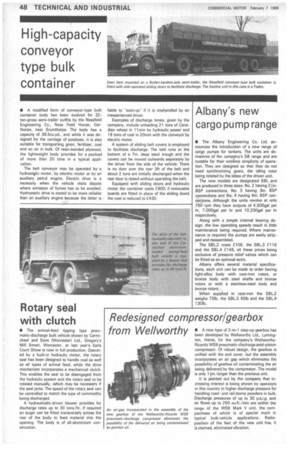High-capacity conveyor type bulk container
Page 50

If you've noticed an error in this article please click here to report it so we can fix it.
• A modified form of conveyor-type bulk container body has been evolved for 32ton-gross semi-trailer outfits by the Nessfield Engineering Co., Ness Field House, Garthorpe, near Scunthorpe. The body has a capacity of 36.5cu.yd., and while it was designed for the carriage of potatoes, it is also suitable for transporting grain, fertilizer, coal and so on in bulk. Of resin-bonded plywood, the lightweight body provides for a payload of more than 20 tons in a typical application.
The belt conveyor may be operated by a hydrostgtic motor, by electric motor or by an auxiliary petrol engine. Electric drive is a necessity when the vehicle visits depots where emission of fumes has to be avoided. Hydrostatic drive is stated to be more reliable than an auxiliary engine because the latter is
liable to -soot-up" if it is mishandled by an inexperienced driver.
Examples of discharge times, given by the company, include unloading 21 tons of Canadian wheat in 11min by hydraulic power and 19 tons of coal in 20min with the conveyor by electric motor.
A system of sliding belt covers is employed to facilitate discharge, The belt runs at the bottom of a 7in. deep steel trough and the covers can be moved outwards separately by the driver from the side of the vehicle. There is no door over the rear 3ft of the belt and about 2 tons are initially discharged when the rear door is raised without operating the belt.
Equipped with sliding doors and hydraulic motor the container costs £600; if removable boards are fitted in place of the sliding doors the cost is reduced to £430.












































































































































































